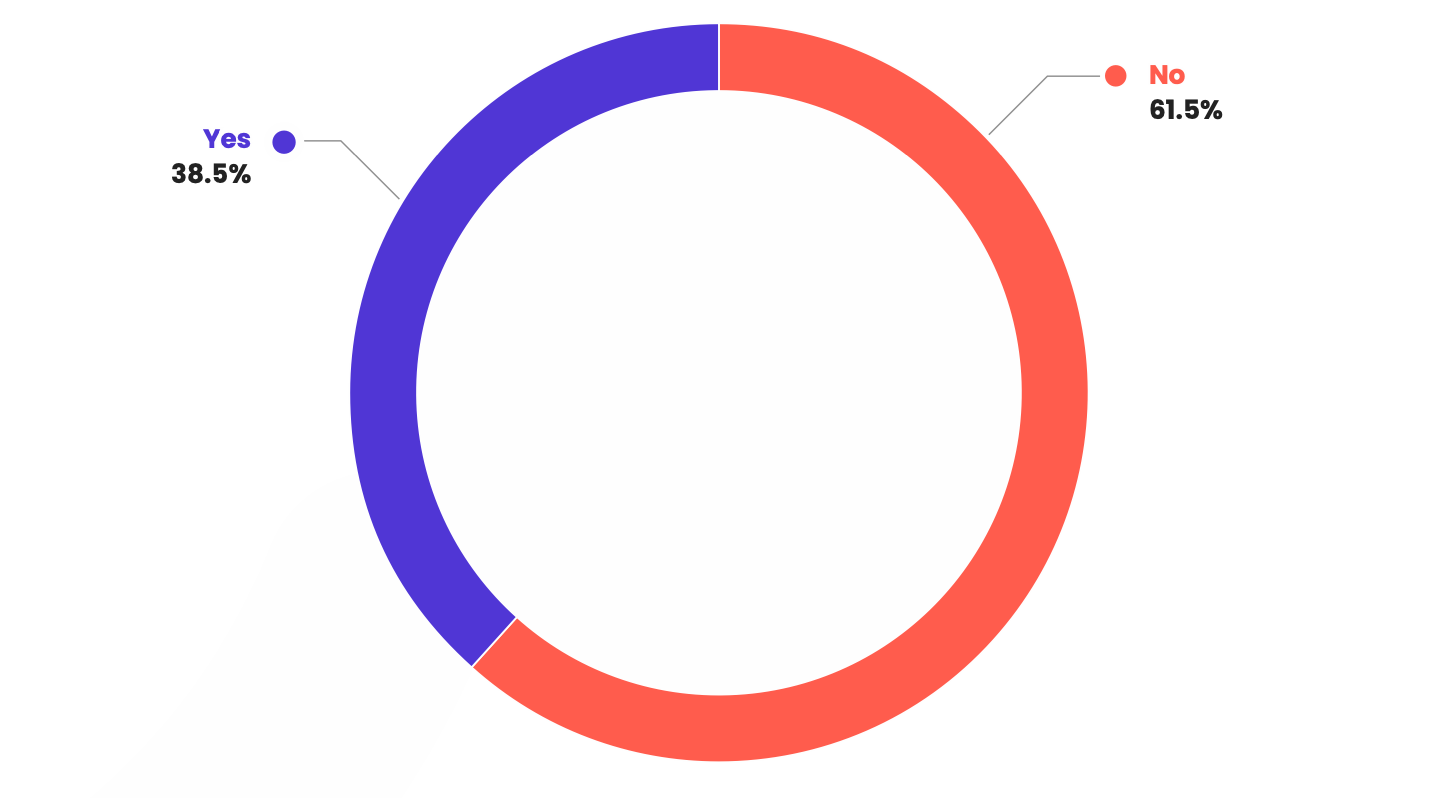If you work in customer success, your job is to help your customers become more successful – and that’s no mean feat.
All anyone hears about these days is how customer acquisition costs are rising and making it that much harder for sales teams to drive new business. This is why driving sustainable revenue growth through your existing customers has become a critical mandate.
That's where online customer communities come into play. They serve as a powerful catalyst for scaling customer success operations and fostering customer-led growth.
What is a community?
If you’re new to the world of online customer communities and how they relate to customer success, let’s catch you up.
An online community is a group of people with a shared interest who communicate over the internet.
Businesses can harness the power of community for their own customer base, which is different from social networking communities like Twitter, Reddit and YouTube, in that there are more guidelines and requirements for joining. Customer communities are dedicated spaces businesses carve out to give their customers a chance to engage and learn from one another.
According to the resident community experts at Community-Led Alliance, a branded online community is professional, as opposed to social, centered around a brand or an organization:
“Through their shared purpose within this, they can help each other, and the organization, to grow. Building a branded online community means the customer isn’t left with just one avenue for information, i.e. via your website, but they can connect with other customers, members, employees, and collaborators.”
Establishing an online community for your product or service presents an excellent opportunity to scale your customer success initiatives and communication efforts, especially when resources are limited.
Scaling customer success is often a hot topic at our Customer Success Festivals, and – in a rather meta observation – it's also a frequent discussion point in our free Customer Success Collective Slack community!
A community is managed by – you guessed it – Community Managers, who have a lot of common ground with Customer Success Managers, namely the shared goal of making sure their customers are as successful and happy as they can be.
It seems, therefore, an incredibly useful tool to have in a CSM’s arsenal to:
- Share customer feedback
- Collaborate on content creation
- Plan and host events like webinars
- Provide support
Being able to tap into an active and engaged hub of customers seems like a sure way to promote your brand value and find out how customers feel about your product.
The State of Customer Churn Report revealed that most companies (61.5%) do not have a dedicated community for their customers. Less than 40% of businesses have communities and customer success teams.

Melanie Lawn, ex-Chief Revenue Officer at Forecast:
“Customers often want to speak to other customers and more importantly want to learn and discuss user cases together. Having a positive, proactive customer community will have a positive impact on churn. But the opposite is true too – it’s important to be mindful of how you manage your customer community.”
Michelle Wideman, Chief Customer Officer at Silverfort:
“COVID-19 really impacted how and when folks work. Customers are constantly saying they want to be able to self-serve as much as possible. Communities enable us to provide a 24/7 resource for customers to be able to leverage.”
Benefits of community-led customer success
The benefits of a community-led customer success model are numerous. First and foremost, it provides a platform for 24/7 access to resources. Customers can find a build video or get answers on a Saturday afternoon when it suits their schedule rather than waiting for a CSM's business hours.
Additionally, communities facilitate a broader range of interactions and support beyond what a single CSM could provide. In communities, customers get the knowledge and experience from your in-house product experts and the collective wisdom of our whole customer base.
This encourages a culture of customer self-service and peer support. Customers can learn from watching guided videos, reading step-by-step documentation, and asking questions that get responses from Community Managers (CM), Customer Success and Support Managers, other team members, and their fellow customers.
Heidi Rhodes, Head of Global Customer Success & Sales (CX) at Meta:
"If you don't have things like customer advisory boards, or communities or champion events, practitioner support as one of the motions that you're doing in customer success, now is a great time to rethink about those things as we're being asked to do more with less."
Michelle Wideman, Chief Customer Officer at Silverfort:
“For vendors, it also helps reduce the cost of goods sold by reducing the number of support team members you need to add if you can get to a spot where customers start answering and troubleshooting other customers' questions. But the community is only as strong as its content and engagement, so it does require a dedicated resource, but I’m a firm believer that it pays off.”
This approach allows companies to create an environment where customers can support each other, effectively scaling customer success efforts.

The importance of communities when scaling customer success
When you transition from a traditional one-to-one customer success model to a scale program, there's simply not enough bandwidth for a single Customer Success Manager (CSM) to meet with each customer on a regular cadence, according to Wes Gibson, Customer Success Manager at Bynder.
You need a medium where customers can come together and get the same level of service and value, but in a way that makes sense for those running that community.
Wes Gibson, Customer Success Manager at Bynder:
"Communities enable customers to interact, share knowledge, and find solutions without needing one-to-one interactions with CSMs. They provide a forum for sharing new resources and ways to accomplish traditional customer success tasks, like building something in our product, but through videos and written instructions that customers can access self-service, 24/7. The importance of building online communities for customer success becomes even more apparent when resources are limited."
But communities aren’t just a gold mine of resources for customer success to tap into – they can serve as a valuable resource for product teams, too. By digitizing customer engagement in an online community, you're creating a goldmine of written feedback that product leaders can directly access.
Heidi Rhodes, Head of Global Customer Success & Sales (CX) at Meta:
"If you’re investing in creating that community online, then there is written feedback there that they can peruse. Right? They can self-serve themselves and go through and read those comments directly. So you're allowing your product team to self-serve there."
This direct line to customer insights can significantly enhance product development and customer satisfaction.

Creating a personal touch in communities
While leveraging an online community is all about scalability, you can't let it become a faceless experience. A smart move made by many communities is to have real people create content and engage in the community. Whether that’s having your Community Manager personally record videos, having you, the CSM, document your processes, or always having a team member hosting events or responding to questions.
This personal touch is crucial for building trust and familiarity. They see the Community Manager’s face from videos, get emails from the CM or CSM with my name on them, and know they're engaging with a real person, not just an anonymous knowledge base.

Continuous feedback and improvement
Customer feedback is instrumental to customer success – it simply doesn’t work without it. Whether that’s post-onboarding, when they're mid-cycle, or at renewal, you should always closely monitor feedback.
This input directly shapes how you iterate on the community experience. For example, if customers indicate they don't find value in certain types of content, you should probably discontinue it. If they request more guidance around specific features or use cases, you should prioritize creating videos and documentation accordingly.
Keeping a weathered eye on what’s performed well is critical. With your community management team, you can perform quarterly audits of our community content, analyzing user engagement metrics to see what's resonating and what may need improvement. The great thing about communities is that instant feedback loop – you can quickly identify high-performing posts that struck a nerve and double down on that type of valuable content.

Segmentation strategies
Ensuring relevance
As your business grows, the breadth of your customer base will change, too. However, let’s not throw caution to the wind here; having a large, diverse customer base requires specialist attention. You should never apply the “spray-and-pray” method, no matter how tempting an option. Effective segmentation is critical for delivering relevant information to the right audiences. You can use tools to analyze customer needs, industry nuances, and product usage to tailor relevant messaging and resources.
For instance, some content may be tailored to higher-value customers, while other resources will have broader applicability across customer tiers. Create a baseline of generally helpful content, then layer on more targeted segments as needed.
This segmentation strategy will allow you to avoid overwhelming customers with irrelevant information, keeping the community focused on providing value to each person's specific context and use case.
Engagement strategies
Creating valuable, thought-provoking content
To keep your community vibrant and engaging, create high-quality, valuable content that drives continuous participation. Here are a few key strategies:
Best practice videos
Rather than just releasing uninspiring product announcements that provoke little engagement, try developing videos explaining the "why" behind new features and sharing best practices for maximizing their value.
Customers don't just want to know what's new—they’ll already have received an in-app/in-product notification about that! What they really want is guided advice on how to implement it.
Thought leadership posts
Use your community as a platform for driving conversations around broader topics pertinent to your product and current trends in your industry. These thought-provoking posts will undoubtedly spark insightful discussions and peer sharing of experiences.
Targeted outreach
By connecting your community to a customer success software solution, you can trigger automated emails to customers based on their product usage, making personalized content recommendations. If they haven't leveraged a new feature, for example, we can send them a link to our best practice guide.
The future of community-led growth
As companies increasingly rely on expansions and renewals from their existing customers as a revenue engine, the community model presents exciting opportunities. Be curious! Working in customer success at an organization with a customer community affords you a unique opportunity to explore the different ways to leverage said online community as a catalyst for facilitating customer-led growth and identifying expansion opportunities.
Here are some ideas you can test:
- Use polls and surveys to uncover unmet customer needs that could drive upsell paths
- Start tracking engagement to identify power users who may be interested in additional products
- Trail "office hours" for customers to discuss strategies with product experts
- Set up a dedicated space for submitting product feedback and feature requests
Your overall vision for your customer community shouldn’t just be for support and enablement but as a two-way conversation for fueling our customer's growth in tandem with your own.
The potential for growth through community-led initiatives is substantial. When customers are deeply engaged with your product and community, it can lead to significant upsells and cross-sales opportunities. As Jairaj Sounderrajan, SVP of Customer Success and Self-Serve Experience at Telnyx, puts it:
"It's all about growth. Here, customers are deeply immersed in the product, leading to potential upsells and cross-sales. This is the epitome of true adoption, evident when the net revenue retention (NRR) begins to soar due to increased value extraction by users."

Advice for building a customer community
For any customer success leaders considering launching an online community, our advice is this:
- Clearly define the purpose. Is it for self-service resources? A discussion forum? Product feedback? Determine the primary use case(s) first.
- Collaborate with your customer support team to crowdsource what customers need most. What are the frequent questions, common requests, and areas where they currently struggle? That should shape your initial content roadmap.
- Create valuable, easily accessible content that will encourage customers to adopt the community early on. If they can't instantly see the value, they likely won't return.
- Have a real human face and voice. Don't let it feel like a faceless knowledge base - let your team members personalize the experience.
- Be prepared to iterate and evolve based on customer feedback and engagement metrics. Not everything will work, so double down on what resonates and adapt or discontinue what falls flat.
Building an online customer community is an iterative process of collaboration, creating valuable content aligned with customer needs and continuously optimizing based on data. But when done well, it becomes a powerful catalyst for scaling your customer success operations and driving growth through a customer-led model.
When starting to build your community, it's crucial to understand what your customers want and need. As Maranda Dziekonski, Senior Vice President, Customer Success & Operations at Datasembly, advises:
"I've been having conversations with some customers as well about what would it look like for you or what would success look like for you? If I was to put a community out there, what would you want to see in it? What value?"
This customer-centric approach ensures that your community provides real value from the start.
Finally, remember that building a community can take many forms. Some companies have found success with simple solutions, like Maranda at Datasembly:
"I've even thought about doing something simple and starting a Slack channel, which I've done before, for our customers to be able to talk and have different themes for rooms."
The key is to create a space where customers can interact, share knowledge, and support each other, taking some of the burden off individual CSMs.
Wrapping up
Ultimately, building a strong customer community can become a powerful tool for scaling your customer success efforts.
Fostering a vibrant community not only enhances customer support and engagement but also creates new opportunities for customer advocacy, which can drive further growth and success for your business.
Ash Turner, Senior Customer Success Manager at Zendesk:
"Community is one of biggest things that we found as a huge arsenal for us for scaling our customer success... tracking customer advocacy actions when they serve as a reference."



 Follow us on LinkedIn
Follow us on LinkedIn





